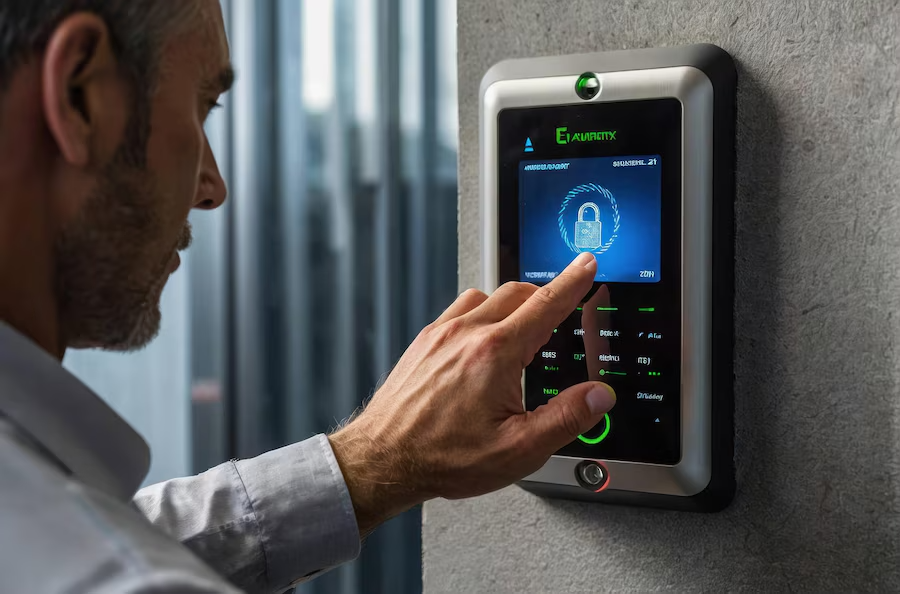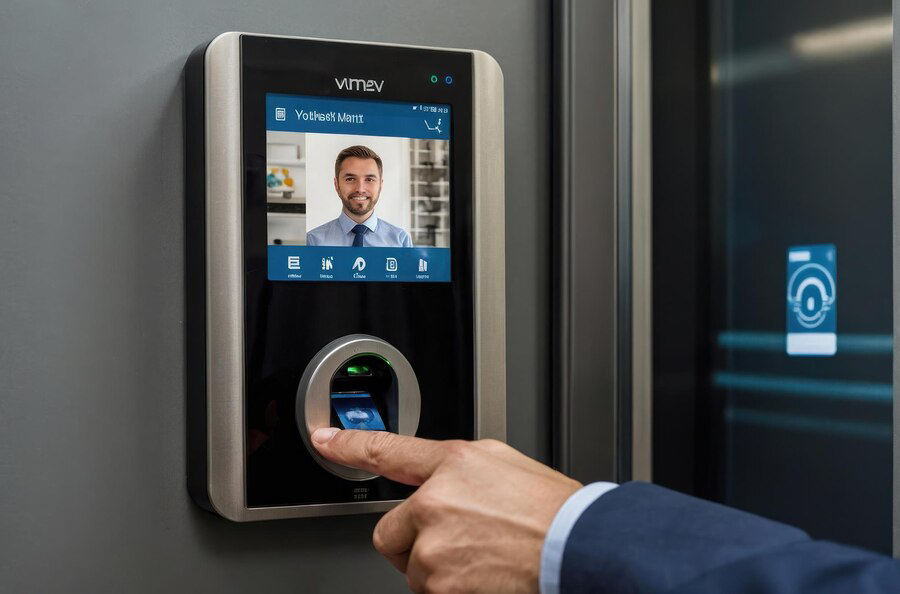In today’s world, security is paramount for businesses of all sizes. With the increasing need to protect sensitive information and physical assets, commercial access control systems have become essential. Whether you’re a small startup or a large corporation, understanding these systems can help you make informed decisions about how to secure your facilities. Let’s dive into what commercial access control systems are, how they work, their benefits, and what you should consider when choosing one.
What is a Commercial Access Control System?
A commercial access control system is designed to manage and monitor who can enter or exit designated areas within a building or facility. Utilizing various technologies, such as key cards, biometric scanners, and mobile access solutions, these systems provide a robust layer of security tailored to the specific needs of a business. Unlike traditional locks and keys, access control systems offer more flexibility and control over entry points.

The main objective of these systems is to prevent unauthorized access, safeguarding sensitive information and valuable assets. By ensuring that only authorized personnel can enter restricted areas, businesses can enhance their security posture while also streamlining operations and improving overall safety.
Key Components of Access Control Systems
Access Control Panels
Access control panels serve as the central hub of the system, processing data from various access devices. They evaluate this information against established security rules to make real-time decisions on granting or denying access to specific areas.
Readers
Readers are essential devices that authenticate users by scanning credentials such as key cards, fobs, or biometric data. Upon receiving a credential, the reader transmits the information to the control panel for verification, ensuring secure access management.
Credentials
Credentials are identification tools that users employ to gain access. These can take the form of key cards, key fobs, or biometric identifiers like fingerprints and facial recognition, providing varying levels of security depending on the technology used.
Locks
While traditional locks still find use, modern access control systems often feature electronic locks that offer enhanced security and convenience. These electronic locks can be managed remotely, allowing administrators to control access without physical keys.
Software
Access control software is integral for system management, enabling administrators to oversee user access, monitor system activity, and generate detailed reports. This functionality enhances operational efficiency and supports compliance with security policies and regulations.
Cameras and Alarms
Integrating surveillance cameras and alarm systems into access control frameworks strengthens overall security. While not mandatory, these components provide real-time monitoring and alerts, creating a comprehensive security solution that deters unauthorized access and enhances incident response capabilities.
How Do Access Control Systems Work?
Access control systems operate on a simple premise: validate the identity of a user before granting access. Here’s a step-by-step breakdown of how it typically works:
- Credential Presentation: A user approaches a secured entry point and presents their credential (e.g., swiping a card or scanning a fingerprint).
- Data Transmission: The reader captures the credential data and sends it to the access control panel for verification.
- Access Decision: The control panel checks the presented credential against its database to determine if access should be granted or denied based on predefined rules.
- Granting/Denying Access: If the credentials are valid and the user is authorized for that area, the system unlocks the door. If not, access is denied, often with an audible alarm or visual indication.
- Activity Logging: All access attempts—both successful and unsuccessful—are logged for security monitoring and auditing purposes.
Types of Access Control Systems
There are several types of access control systems, each catering to different needs and levels of security. Here’s a brief overview:
Standalone Systems
These are simple systems where a single door is controlled by a keypad or card reader. They are cost-effective and easy to install but lack centralized management.

Networked Systems
Ideal for larger facilities, networked systems connect multiple access points to a centralized control panel or server. This allows for greater flexibility and management capabilities.
Cloud-Based Systems
These systems are hosted in the cloud, allowing for remote management and monitoring. They are increasingly popular due to their scalability and ease of use.
Mobile Access Control
This modern approach allows users to access secured areas using smartphones. It’s convenient and can enhance security by reducing the need for physical cards.
Biometric Systems
These use unique physical traits—like fingerprints, facial recognition, or iris scans—as credentials. While they offer high security, they can be more expensive and require more maintenance.
Benefits of Commercial Access Control Systems
Investing in a commercial access control system provides numerous benefits that enhance security and operational efficiency. The most notable advantage is improved security, as these systems significantly reduce the risk of unauthorized access, thereby protecting valuable assets and sensitive information. Additionally, many systems maintain detailed audit trails, logging who accessed which areas and when, making them invaluable for investigations and regulatory compliance.
Beyond security, access control systems offer convenience and flexibility. Users can utilize a single credential, such as a key card or smartphone, to access multiple areas, eliminating the hassle of carrying multiple keys. Furthermore, modern systems enable remote management, allowing administrators to easily add or revoke access without being physically present, leading to potential cost savings by preventing theft and unauthorized access.
Considerations When Choosing an Access Control System
When selecting an access control system, it’s essential to evaluate your specific security needs. For example, a small office may only require a basic system, while larger facilities handling sensitive data might need advanced solutions, such as biometric access. Additionally, establishing a clear budget is crucial; opting for the cheapest option could compromise security features that are vital for protecting your assets.
Scalability is another important factor, as businesses often grow and require systems that can adapt without significant upgrades. Ensure the system integrates seamlessly with existing security measures, like surveillance cameras and alarms, to create a holistic security strategy. Finally, prioritize user-friendliness and assess vendor support and maintenance options to guarantee reliable operation and quick issue resolution.
Best Practices for Implementing Access Control Systems
Implementing an access control system involves more than just acquiring the necessary hardware and software; it requires careful planning and execution. Start by conducting a thorough security assessment to identify vulnerabilities within your facility, which will help tailor the system to your specific needs. Involving stakeholders from IT, HR, and facilities management can provide valuable insights, ensuring the system addresses diverse requirements and operational challenges.
Training is crucial for maximizing the system’s effectiveness, so provide comprehensive sessions for both administrators and users. Regularly review access levels to ensure only authorized personnel have entry, particularly after staffing changes. Lastly, stay updated on technological advancements and best practices to enhance security and maintain system integrity over time.
Conclusion
Understanding commercial access control systems is vital for enhancing the security of your business. By assessing your unique needs, involving key stakeholders, and ensuring proper training, you can effectively implement a system that protects valuable assets. Regularly reviewing access levels and staying updated on technology advancements further strengthens your security posture. At Rock Locksmith Calgary, we’re committed to helping businesses navigate their access control solutions. Whether you need guidance on selecting the right system or ongoing support, we’re here to ensure your security needs are met efficiently.
